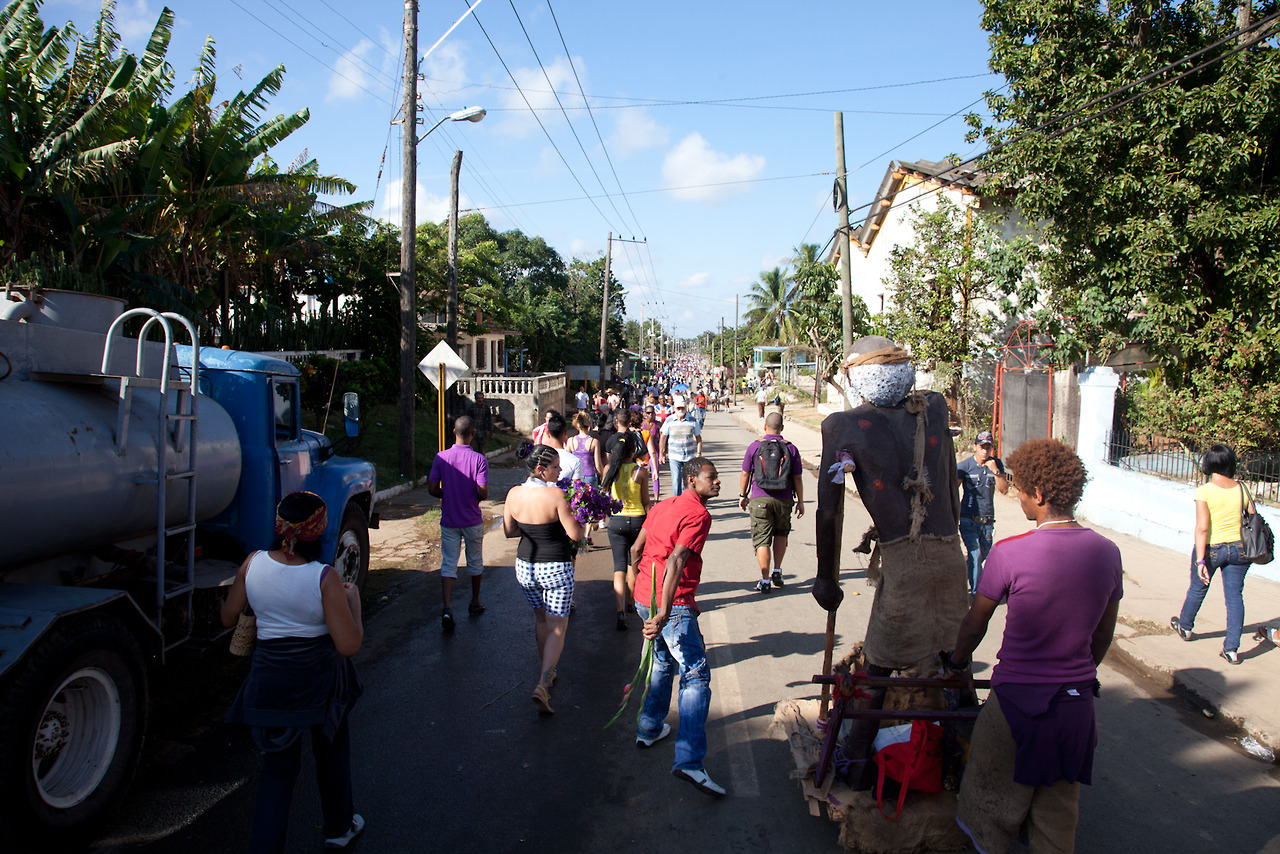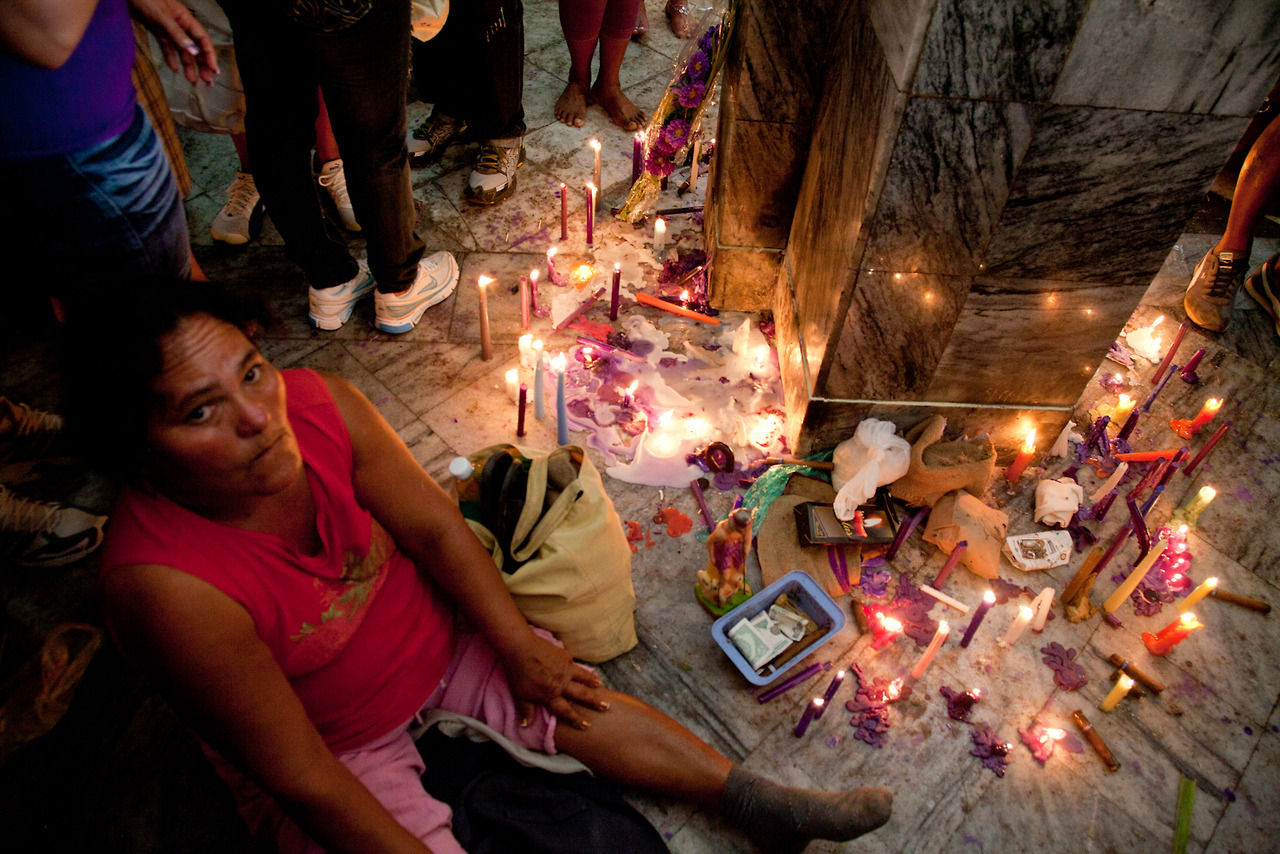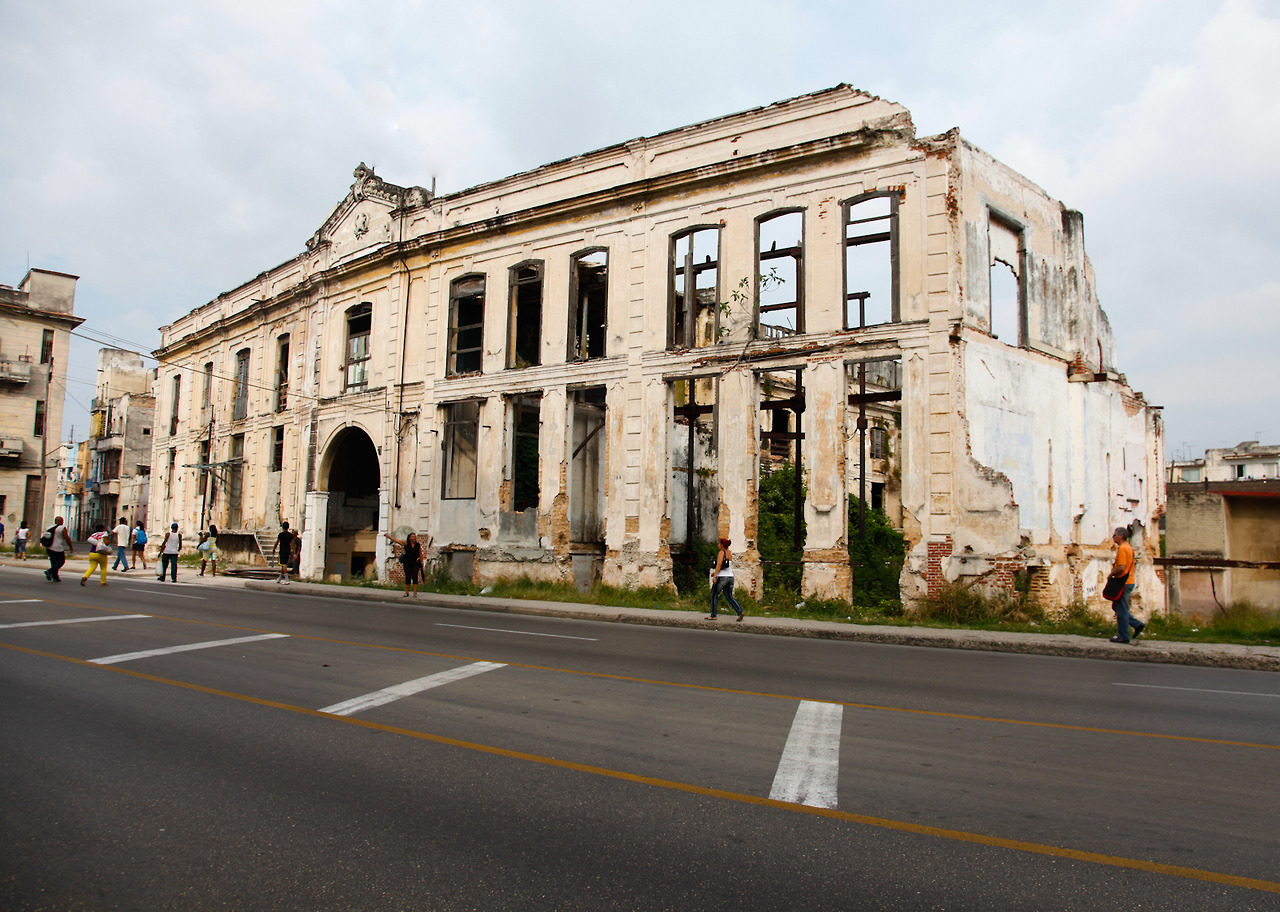By Matthew Morowitz
With Everyone and for the Good of Some: Two artists walk across Cuba from Tanya Bernard on Vimeo.
Starting on September 8th, 2013 artists Tanya Lucia Bernard and Luis Manuel Otero Alcántara will be on a pilgrimage. But, unlike a traditional pilgrimage where people visit the relics of a saint, these two artists will be bringing the saint to the people…
In their piece “With Everyone And For The Good of Some” (Para Todos Y El Bien De Unos Cuantos), Bernard and Alcántara are constructing a 2-meter tall sculpture of La Virgen de la Caridad del Cobre (Our Lady of Charity of El Cobre), the most recognized and venerated religious icon on the island of Cuba, which they will be carrying across Cuba on a 900km journey, starting from Havana and ending in Santiago de Cuba. Alcántara will make the sculpture with assistance from youth and children living in El Cerro, Havana, Cuba, out of paper mache; she will have black skin and be robed in the traditional yellow colors with which she is associated. The sculpture will then be transported by cart across Cuba by the artists, as Bernard documents the journey through photographs and video.
Along the way, Bernard and Alcántara will allow the people to not only come and touch the sculpture, but also write their wishes and prayers directly onto her corpus. Like a traditional pilgrimage, the artists will also be collecting alms and, at the culmination of the project, they plan to donate the money to a designated cause, assessing different criteria for which one.
The Virgin, who as mentioned is the most venerated religious icon in Cuba, was used partly as a political tool by the Cuban government. During the early 90s, the government began to re-visit Cuba’s Catholic traditions in order to restore values and standards of conduct within the population following economic duress and softening immigration laws due to the collapse of the Soviet Union. In 2012, in honor of the 400th anniversary the Virgin’s sighting, the Catholic Church launched a countrywide celebration in Cuba where the small statue of the Virgin, that usually resides in her church in El Cobre, was brought around the country for the whole population to see. Hundreds of thousands of Cuban citizens flocked to see the small statue, giving money and offerings in her honor for the upkeep and expansion of her sanctuary, demonstrating the power and control faith in the Virgin emanated throughout the country.
“Alcántara with sculpture of San Lazaro / Babalu Aye. The 18 mile trek.” Photo courtesy of Tanya Bernard.
In the wake of Hurricane Sandy in 2012, which left irreparable damage to the province of Santiago de Cuba, one of the most neglected provinces of Cuba and also the location of the sanctuary that houses the statue of the Virgin, the Catholic Church made efforts to collect goods and funds for the Cuban victims. However, the Church prioritized their churches, livelihoods, and salaries over the basic needs of food and shelter for the people. The province has yet to recover and it will likely take years for the region to recuperate fully.
A very layered piece, “With Everyone And For The Good of Some” seeks to address many issues related to areas such as religion, politics, and even the state of the arts. When the sanctuary’s statue of La Caridad was toured last year, it was kept at a distance from the people and set behind a crystal vitrine, a strategy that while protecting the image of the Virgin also establishes a distance between human existence and the divine. Such ideas are not limited to the divine as well; consumer culture seeks to create icons that are both untouchable and unattainable in order to create a following of people wishing to be “ordained” or sanctified by these powers. Bernard and Alcántara’s piece seeks to destabilize the control such separations have on human populations by bringing an icon that has been used to reinforce these ideas into direct contact with the people.
Photo courtesy of Tanya Bernard.
The journey the artists are undertaking is not only political, but also personal. The artists believe faith goes farther than merely believing in a saint or a religion to bring on needed change in one’s life, believing instead that faith is something that comes from within. They are hoping to show through this work that churches that create doctrines dictating how and what one is to believe in is only a mechanism of control. A lot of ideas similar to this appear in the art world as well; as the more prominent artists have created and invested in their own philosophies, the art markets bolster their presence and importance, and their works are icons of reverence inspiring practitioners to become like them. These institutions that promote these artists also keep their works separate from the people while attempting to capitalize on the artists’ influence through selling books, reproductions, and other products intended to show up-and-coming artists how to attain this status. As the artists have stated in their proposal:
“The Church has put emblems in vitrines that are untouchable; art galleries and museums have put art on walls alongside a guard that reprimands you if you even breathe too close to the work; but that symbol or work of art is not the philosophy. These relics are precious tools of power and control, which get wielded as long as they are of service to the institutions that house them.”
“Havana.” Photo courtesy of Tanya Bernard.
The performance will culminate with an exhibition of pseudo-religious art objects taking place in difference galleries and institutions around Cuba. These exhibitions, which will display the sculpture and the photos and videos taken during the journey, are intended to create a discourse around the idea of philanthropic help. Utilizing the input of the people, Bernard and Alcántara will work to democratically decide which cause to give the donations they collect throughout their journey. However, if the people cannot come to a decision or choose to allocate the funds towards something the artists feel is counterintuitive towards the piece (i.e. the church), then the artists will veto the process and donate to a designated cause of their choosing.
Anyone who is interested in following the progression of Bernard and Alcántara’s journey can follow their progress on their blog, and if they are interested in supporting the artists’ efforts can donate to the project’s Paypal.




